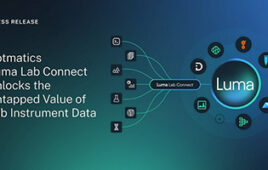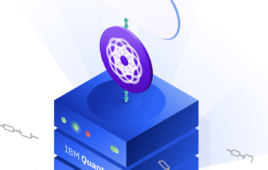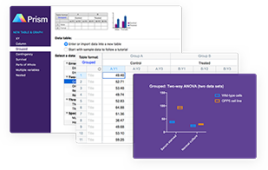QA/QC: ELNs Have Come a Long Way
Realizing the full potential of today’s electronic laboratory notebooks
Some of you might think that the quality assurance/quality control (QA/QC) electronic laboratory notebook (ELN) is just software that replaces your paper laboratory notebook. However, that theoretical model has become outdated. As we all know, when we take a process from paper and make it electronic, it is never the same.
Because different software programs focus on different market segments, not every ELN currently available is meant to be used by every group of potential users out there. Some of the issues for a good manufacturing practice (GMP) system are validation, audit trails and becoming part of the batch release system.
Terminology Alert
These systems are sometimes referred to as laboratory execution systems, or LES. Then again, people working on the research end of the ELN market sometimes insist that what a QA/QC lab uses should not be called an ELN, because it does not provide the loose structure that the research version of these products would. However, it is common to use the term “ELN,” regardless. Additionally, with laboratory information management systems (LIMS) that now provide ELN functionality and ELNs that also increasingly provide LIMS features, as the systems continue to morph, so will the terms that refer to them.
Method Execution and More
When we talk about QA/QC and ELNs, we often focus on method execution. This is merely a way to ensure that methods are executed in a specific way, with certain things happening at certain points, as described by the method. Because the desire here is to force the user as much as possible to follow specific steps, these systems help to ensure that rigidity. This is not to say that there is absolutely no flexibility. For example, a system might provide alternate workflow routes when a corrective action preventive action (CAPA) must be taken.
These systems also can be used to enforce standard operating procedures (SOPs) and to allow for validated calculations and instrument interfaces. In fact, Keith Wipprecht, a senior director at LabWare, says “that the focus is really on electronically acquiring or importing all procedural data into a common system, so that the entire procedure can be reviewed in one place.” This is more than just performing method execution. Ken Rapp, President and CEO of VelQuest, mentioned similar practices and efforts in the GMP customer space. One specific point he brought up was that, with the explosion of contract labs, there is a significant desire to make it simpler to run a lab by assigning work to people and absolutely making sure they follow procedure in a standard way, so one lab can provide exactly the same testing process as another lab.
Integration
Today, it is important not just to install specific solutions in a laboratory, but to integrate laboratory informatics products so the laboratory can work more seamlessly, not just with all its own products, but also with products that feed and are fed by its software. Both Rapp and Wipprecht stress that ELN integration is a huge issue. The ability to integrate with instruments and instrument software is pretty standard in most leading ELNs. However, the ability of the ELN to integrate in a comprehensive manner with other business systems, such as LIMS, CAPA for investigations, and document management where SOPs are typically managed, is not necessarily a standard capability and may have to be customized. It is wise for customers thinking about ELN to thoroughly investigate these integration capabilities when selecting an ELN, because hard benefits can be realized if the ELN is able to be comprehensively integrated with these other systems.
Regarding systems that become a “data graveyard, the place where data goes to die and is never seen again,1” Wipprecht cautions companies against ending up with that kind of stand-alone system, i.e., buying a system without thinking of whether and how it will integrate with other systems and becoming, in his words, “an island of data.” Rapp adds that software vendors who want to service the QA/QC ELN space are working with other vendors in the space to create seamless systems integration.
Combination Products
Now that ELNs are so common, the market is seeing more varieties of product offerings in conjunction with them. It is not just that there are yet more ELN products offered in each category, but also that these products are continuously morphing to provide more complete solutions to customers. As part of this trend, we are starting to see more combination systems. By that, I mean that, instead of having two systems and integrating them, we are starting to see more products that combine systems.
The most notable example, so far, is the LIMS/ELN (or ELN/LIMS). A LIMS deals basically with samples and with managing them in the lab, while an ELN is focused more on experiments. Some claim that a QA/QC LIMS is basically the same as a QA/QC ELN. Certainly, we see both sets of products continuing to encroach on the other’s territory.
Additionally, as customers currently integrate ELNs with systems, such as product lifecycle management (PLM) and manufacturing execution systems (MES), those systems might begin to merge. We will likely start to see products specifically targeted at those areas and also strategies by vendors working together to provide those combinations in a single solution (i.e., multiple products sold together with a specific integration solution as part of the sale).
Legal/Process Issues
One thing that can hold companies back in realizing the full potential of their QA/QC ELN is that streamlining the process must be done while continuing to satisfy all legal issues. One streamlining issue is sometimes referred to as machine witnessing. Basically, if you consider that a notebook needs to be witnessed, where processes are extremely structured, a company that streamlines will want to verify that that streamlining continues to prove, or witness, their data and that processes have been properly managed.
According to Dominic Ryan, a Senior Director at Cubist Pharma, we can most appropriately define this as “streamlining the workflow without exposing the company to additional risk.” His tip to companies that want to streamline their processes is to get a list of issues to address from a lawyer. According to Rapp, customers often implement a system, become familiar with features available to provide the right “proof” (such as auditing and e-signatures), and then will later use these features as a justification in this streamlining. This is the strategy that Ryan’s company has taken and about which he is speaking at conferences.
Finally
For those of you who are considering such a system, if you already have a GMP system in place, you have an idea of the issues that must be addressed for such an implementation. For those of you who haven’t, remember that buying any informatics system requires you to have a list of all your needs, including issues such as interfacing and validation.
References
1. Metrick, Gloria. “The Data Graveyard.” Lab Manager Magazine Newsletter, Jan. 16, 2008.
Acronyms
CAPA Corrective Action Preventive Action
ELN Electronic Laboratory Notebook
GMP Good Manufacturing Practice
LES Laboratory Execution System
LIMS Laboratory Information Management System
MES Manufacturing Execution System
PLM Product Lifecycle Management
QA/QC Quality Assurance/Quality Control
SOPs Standard Operating Procedures
Gloria Metrick is the owner of GeoMetrick Enterprises and the author of “Out on a LIMS®: The Newsletter for People Who Risk Life and LIMS™ on a Daily Basis” and “Out on a LIMS®: The Blog for People Who Risk Life and LIMS™ on a Daily Basis,” as well as the founder of the LinkedIn® LIMS/Laboratory Informatics group. She may be contacted at [email protected].




